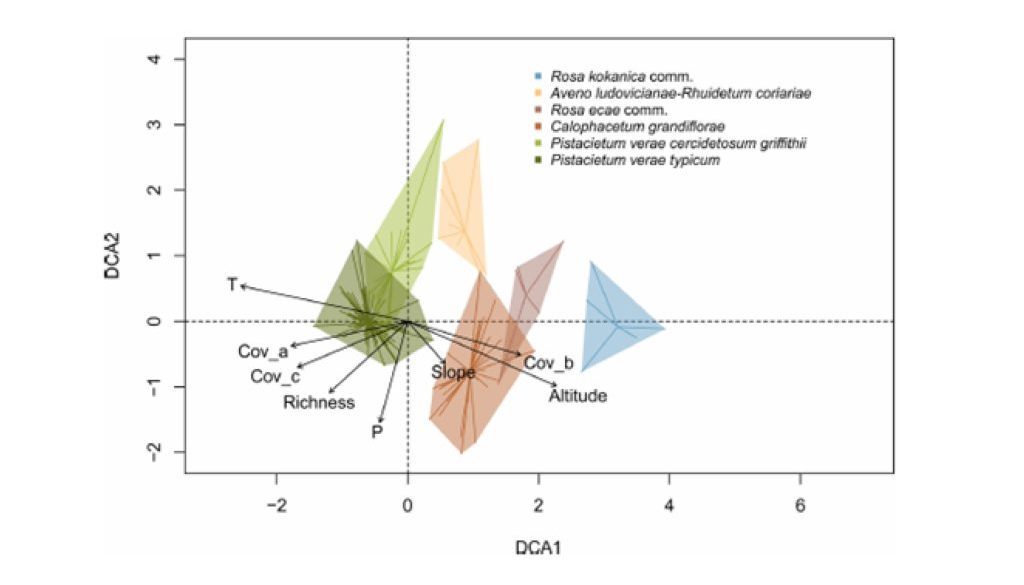Przez długi czas zupełnie pomijane albo łączone niesłusznie ze zbiorowiskami zarośli mezofilnych gaje pistacjowe doczekały się klasyfikacji. Nasza praca pozwoliła także na wyróżnienie zarośli reliktowego gatunku Calophaca grandiflora oraz tzw. rozariów — naturalnych niskich zarośli na kamienistych stokach gór Pamiro-Ałaju w Tadżykistanie.
Abstract
In this paper we present the first syntaxonomic classification for the thermophilous open wood and scrub vegetation in Tajikistan with some remarks on its environmental gradients. Altogether 143 relevés were sampled between 2014–2021 using the seven-degree cover-abundance scale of Braun-Blanquet. They were classified by the modified TWINSPAN method with the use of the four step interval scale with cutoff levels of 0%, 2%, 5% and 10% and total inertia as a measure of cluster heterogeneity. Diagnostic species were identified using the phi coefficient as a fidelity measure. Detrended Correspondence Analysis was used to determine the relation between samples, vegetation units and the major gradients in species composition. Plant communities have been divided into three main groups: (1) dry scrub on screes, (2) mesophilous scrubs in nemoral zone, and (3) open woods. A new class of Pistacietea khinjuki-verae has been proposed for open woods. Further classification of vegetation data resulted in the distinction of four plant communities within two provisional alliances: Roseion kokanicae and Ranunculo tenuilobi-Cotoneasterion hissaricae communities of Rosa kokanica and R. ecae, associations of Aveno ludovicianae-Rhuidetum coriariae and Calophacetum grandiflorae). Additionally, we established the Pistacion verae alliance for the pistachio groves of Middle Asia with two subassociations: Pistacietum verae typicum and Pistacietum verae cercidetosum griffithii. The main factors determining the species composition of the studied communities are: elevation, temperature, precipitation, slope and aspect. Our research showed that the Pistacia groves are a distinct vegetation typical of the Irano-Turanian area and that further surveys are needed to present a final classification of scrub vegetation of Tajikistan.
Nowak A., Nobis M., Nowak S., Kotowski M., Klichowska E., Nobis A., Świerszcz S. 2022. Syntaxonomy and ecology of thermophilous deciduous open woodlands and scrub vegetation in Tajikistan (Middle Asia). Dendrobiology 87, 47–68.

